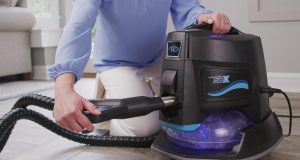Do you need a vacuum relief valve on my water heater? The answer is yes. Keep going through the article to find out further information about the vacuum relief valve.
We all know that the water heater is an integral part of the plumbing system of any house. Especially, in the winter, it is pretty hard to think of a day without the water heater. From the morning shower to washing the dishes and everything else, the thing plays an important role. However, your water heater might become inefficient sometimes due to some issues. The vacuum relief is a tool to make your heater more efficient.
In the below part of the article, we will discuss more what is the vacuum relief valve and how it works. Along with that, we will let you know the importance of the vacuum relief valve for the water heater of your home’s plumbing system.
What is Vacuum Relief Valve?
The vacuum relief valve is something that connects to the water heater or tank applications to protect it from some unwanted issues. This accessory allows the air to go through the piping system to prevent vacuum conditions. These vacuum conditions can siphon the water from the system. By doing that, they can damage the tank or the water heater. The vacuum relief valve is a must when you have the water heater above the fixture outlet of the hot water system.
Here is what can happen if you want to install a water heater above the fixtures: Due to the vacuum conditions inside the machine, there can be siphonage inside the heater. The siphon is created because of the fixture water supply being lower compared to the water tank. This might make the tank empty and create steam in it. You will be shocked to know that the siphonic action is so immense that it can even collapse a tank.
Because of these reasons, it is highly important to install the vacuum relief valve.
Do I Need a Vacuum Relief Valve on My Water Heater?
Absolutely yes. You must need to install the vacuum relief valve on the water heater. Due to the change in the water temperature, the water heater can rupture or implode without a vacuum relief valve. Just like tank protection, it is equally important for the water heater system. The thing can help to protect the entire system from dangerous issues, which can keep you safe while also saving your money by assuring the lifespan of your products.
The vacuum relief keeps your system safe from over or under pressure. Furthermore, you should install vacuum relief to minimize evaporation emissions. It can even help to prevent fire hazards when installed appropriately following the API standards. They also help to reduce the atmospheric corrosion of the system. These are some of the reasons why you should install the vacuum relief valve on your water heater.
In case you are wondering how does a vacuum relief valve work in a water heater. Well, the valve is installed on the water heater and it will open when the vacuum or back-siphon occurs in it. This will enable the air to enter through the valve and prevent any issues. The valve in the heater also helps to protect its elements like the burner.
Different Variations of the Vacuum Relief Valve
You don’t want the plumbing system of your home to explode due to the vacuum failure just because you have skipped the vacuum relief valve. You must pick the right size and type of vacuum relief valve to assure safety. Below, we will let you know about some variations of the vacuum relief valve that you need to know about.
Spring Loaded Pressure Vacuum Relief Valve
The spring-loaded pressure vacuum relief is one of the most commonly used pressure relief valves. One of the main reasons behind their popularity is their low cost. You can find a decent pressure relief valve that costs around $250 to $400. They are suitable for tanks around 150 barrels or less. Because of the low cost, they are not much efficient. One of the issues about this pressure relief valve they will require very high pressure to open. That means they will not open easily.
Such a characteristic of the pressure relief valve makes it only suitable for the tanks or system that arrives with a maximum allowable pressure rating. If your tank or heater doesn’t arrive with such a rating, you should take the risk of using the Spring-loaded pressure vacuum relief valve.
Weight Loaded Vacuum Relief Valve
The weight loaded vacuum relief valves are most suitable for bigger applications. Such as if you have a tank that is more than 150 barrels, you should go for this. You can even use this in the bigger tank that is large in volume, such as around 1000 barrels. In terms of opening mechanism, the weight loaded vacuum relief is the opposite of the pressure loaded one. That is because the weight loaded Vacuum Relief Valve requires less pressure to open. It is also suitable for vacuums that don’t include a high maximum allowable rating.
Weight Loaded Valve with Pneumatic Opener
The Weight Loaded Vacuum Relief Valve with Pneumatic Opener is nothing but a hybrid version of the Weight Loaded Vacuum valve, as the name recommends. You can consider this pneumatic opener as an added benefit of the usual weight laded Vacuum Relief Valve. The benefit of this Vacuum Relief Valve is it can clean the opening when it opens. This is very helpful as the dirt in the valve can malfunction the operation.
It is important to pick the right variation of the vacuum valve based on the application and some other factors. It would be better if you talk with someone expert on this, such as an experienced plumber.
Conclusion
The Vacuum Relief Valve is very much important to protect the entire system. We hope this article will help you to understand the necessity of the Vacuum Relief Valve on the water heater.




